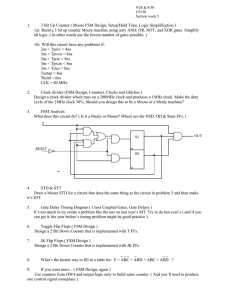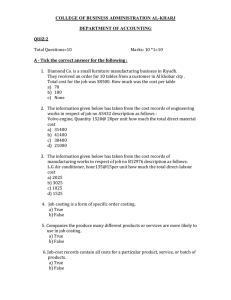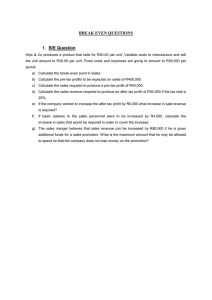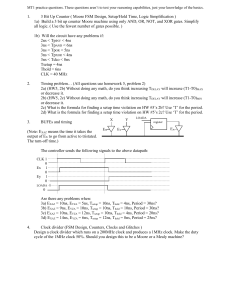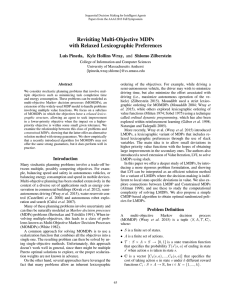Francois Joubert – Transnet Capital Projects Palisade Conference 1 PAGE
advertisement
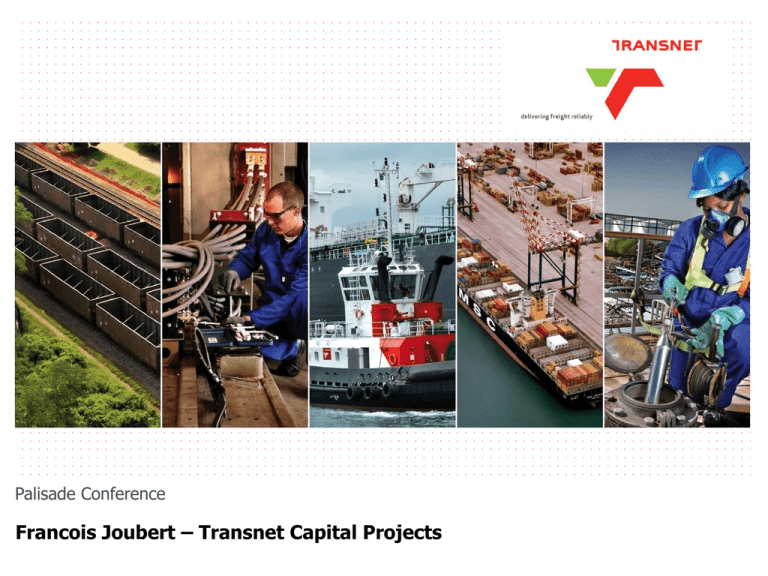
Palisade Conference Francois Joubert – Transnet Capital Projects PAGE 1 Context and Problem statements • Transnet Capital Projects currently has approximately 130 projects in its portfolio: • Spread across 4 phases of the project life cycle • Various complexities • Value from R2 million to R13 billion • Conveyor belt installations, quay walls, rail rehabilitation, wash bays, new railway lines, pipe rack installations, fire equipment installations, building rehabilitation etc. • We use MS Excel to create the risk registers and then capture it in CURA where all risk follow-up and reporting is done from. • Problem Statement 1: Taking costing and uncertainty into consideration, develop methodology which can be used on data extracts from Primavera to indicate which of the projects are likely to be completed at higher than Approved Budget. • Problem Statement 2: What does Transnet see as an acceptable risk register model? PAGE 2 Part 1: Simplified costing report Cost Item Approved Budget Committed Spend Uncommitted Spend FFC Project 1, Item A R100 R80 R20 R90 Project 1, Item B R50 0 R50 R50 Project 2, Item C Etc. • Item A: We have a budget for R100 and have placed a contract for R80. We assume that we have a 90% chance of spending between a Low of 85%, an middle of 90% and High of 105% of the outstanding R20. • TotalItem A = Committed Spend + Monte Carlo (Uncommitted Spend) • TotalItem A = Committed Spend + RiskLognormalt(0.05,0.85*R20,0.5,0.9*R20,0.95,1.05*R20) • TotalItem A = R80 + RiskCompound(RiskBinomial(1,0.9),RiskLognormalt(0.05,R17,0.5,R18,0.95,R21)) PAGE 3 Part 1: Simplified costing report TotalItem A = R80 + 90% chance of PAGE 4 Part 1: Simplified costing report Cost Item Approved Budget Committed Spend Uncommitted Spend FFC Project 1, Item A R100 R80 R20 R90 Project 1, Item B R50 0 R50 R50 Project 2, Item C Etc. • Item B: We have a budget for R50 and have not placed a contract. We assume that we contract value will range between 95% chance and 110% of the contract value. The Budget is used as the middle value. • TotalItem B = Monte Carlo (Uncommitted Spend) • TotalItem B = RiskLognormalt(0.05,0.95*R50,0.5,R50,0.95,1.10*R50) • TotalItem B = RiskLognormalt(0.05,R47.5,0.5,R50,0.95,R55)) PAGE 5 Part 1: Simplified costing report TotalItem B = PAGE 6 Part 1: Simplified costing report Cost Item Approved Budget Committed Spend Uncommitted Spend Forecast ed final cost Project 1, Item A 100 90 10 95 Project 1, Item B 50 0 50 50 Project 2, Item C etc • TotalProject = ∑ TotalLine – all Contingencies • RiskTarget function is used to find position of FFC on generated distribution. • The simulation is run on the entire dataset which is exported from Primavera. PAGE 7 Part 1: Logic Budget / FFC PAGE 8 Part 1: Example PAGE 9 Part 1: Advantages and Improvements • Advantages: • Quick and easy to answer management questions such as: • Which project can we declare saving on? • Which large projects do we have a risk of going over budget and why? • Early warning regarding cost overruns. • Double check on existing processes (costing/estimating and contingencies). • Can provide business intelligence regarding problems in the estimating process. • Improvements • Go one level deeper. PAGE 10 Part 2: Logic for Risk Registers • Scope: • Multiple and once-off risks. • Schedule or Cost as inputs. • Cost can be Rate * Time. • Must make provision in distribution selection for risks which are more risky. • Must calculate Specific Contingency. • Must rank risks (in addition to using Proximity and Tornado graphs). PAGE 11 Part 2: Logic for Risk Registers – Frequency • • In both cases, the rest of the logic remains the same. Typical Poisson: • Damages to underground services. • Inclement weather PAGE 12 Part 2: Logic for Risk Registers – Impact type • Schedule gets converted to cost based on weighted standing time cost. PAGE 13 Part 2: Logic for Risk Registers – Distribution type and Ranking • • • Use RiskCompound together with RiskLognormalt. Remove all Zero values – we don’t want the model to ‘hide’ high impact, low probability risks. We rank according to the 80th percentile – together with Tornado graphs. PAGE 14 Part 2: Logic for Risk Registers – Contingency PAGE 15 Part 2: Example PAGE 16 Part 2: Advantages and Improvements • Advantages: • Flexible. • Expandable. • Caters for all our requirements. • Improvements • Complex If-statements. PAGE 17


